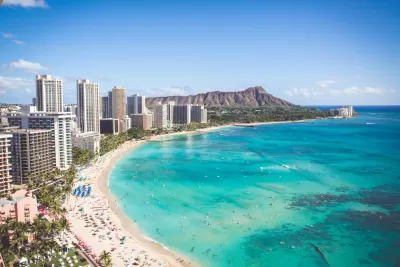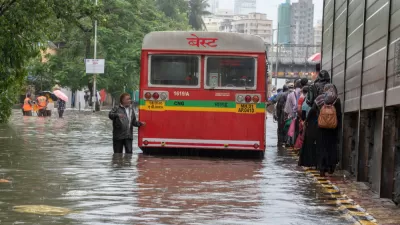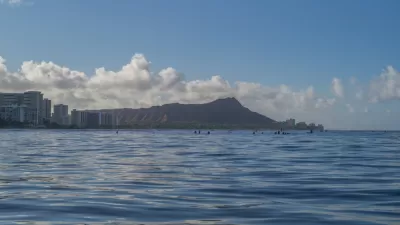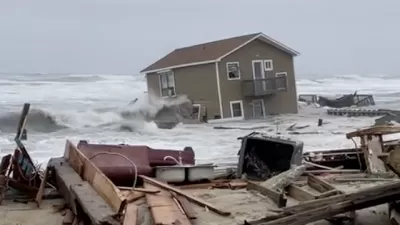A new study calls for changes to coastal management policies to better protect sandy shorelines retreating under the pressure of rising sea levels.

The reactive and piecemeal approach historically used to manage beaches in Hawaii has failed. If policies are not changed, as much as 40% of all beaches on Oahu could be lost by 2050, according to a new study by researchers at the University of Hawaii (UH) at Mānoa School of Ocean and Earth Science and Technology (SOEST). An article by Timothy Hurley shares the news of the new study.
"The team of scientists, led by graduate researcher Kammie Tavares, assessed the shoreline around Oahu that would be most vulnerable to erosion under three scenarios of sea level rise"—all estimated to occur before, and shortly after 2050, explains Hurley. The research team identified the location of shoreline hardening and beach loss and a potential timeline for increased erosion hazards. The most threatened properties fall into an "administrative erosion hazard zone," an area likely to experience erosion hazards and qualify for the emergency permitting process to harden the shoreline.
According to co-author Dr. Tiffany Anderson, assistant researcher in the Department of Earth Sciences, "We determined that almost 30 percent of all present-day sandy shoreline on Oahu is already hardened, with another 3.5 percent found to be so threatened that those areas qualify for an emergency permit today. Our modeling indicates that, as sea level rises about 10 inches (0.25 meters) by mid-century, an additional nearly eight percent of sandy shoreline will be at risk of hardening—meaning at that point, nearly 40% of Oahu’s sandy beaches could be lost in favor of hardened shorelines."
With "hardship variances," oceanfront property owners threatened by erosion have been allowed to build sea walls and other forms of shoreline armoring to protect their property. According to the study, the construction of initial sea walls destabilizes neighboring shorelines and triggers a domino effect of coastal hardening that condemns entire stretches of sandy beach to narrowing and eventual loss.
UH researchers are urging people to lobby county and state policymakers to collaborate on providing ways to help beachfront parcel owners to transition out of their precarious locations to save the sandy shoreline. Specifically, that residents support the creation of a government program to provide economic incentives tailored to individual owners and the development of a long-term plan to encourage residents to "get out of the way of our moving beaches," according to co-author Dr. Chip Fletcher, associate dean and professor at SOEST.
FULL STORY: 25 miles of Oahu beaches could be lost to coastal erosion, study finds

Maui's Vacation Rental Debate Turns Ugly
Verbal attacks, misinformation campaigns and fistfights plague a high-stakes debate to convert thousands of vacation rentals into long-term housing.

Planetizen Federal Action Tracker
A weekly monitor of how Trump’s orders and actions are impacting planners and planning in America.

Chicago’s Ghost Rails
Just beneath the surface of the modern city lie the remnants of its expansive early 20th-century streetcar system.

Bend, Oregon Zoning Reforms Prioritize Small-Scale Housing
The city altered its zoning code to allow multi-family housing and eliminated parking mandates citywide.

Amtrak Cutting Jobs, Funding to High-Speed Rail
The agency plans to cut 10 percent of its workforce and has confirmed it will not fund new high-speed rail projects.

LA Denies Basic Services to Unhoused Residents
The city has repeatedly failed to respond to requests for trash pickup at encampment sites, and eliminated a program that provided mobile showers and toilets.
Urban Design for Planners 1: Software Tools
This six-course series explores essential urban design concepts using open source software and equips planners with the tools they need to participate fully in the urban design process.
Planning for Universal Design
Learn the tools for implementing Universal Design in planning regulations.
planning NEXT
Appalachian Highlands Housing Partners
Mpact (founded as Rail~Volution)
City of Camden Redevelopment Agency
City of Astoria
City of Portland
City of Laramie





























